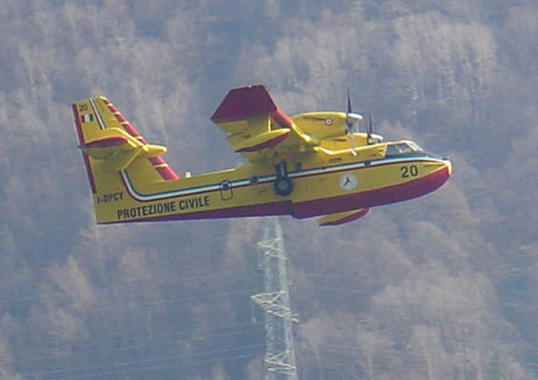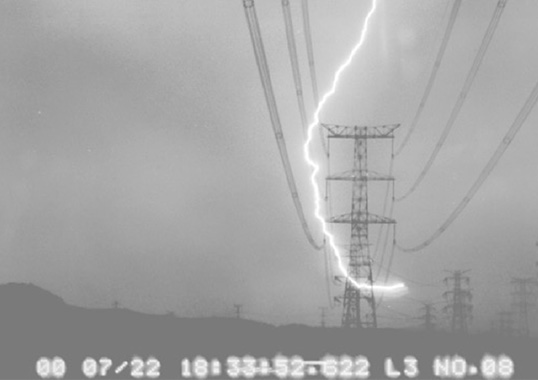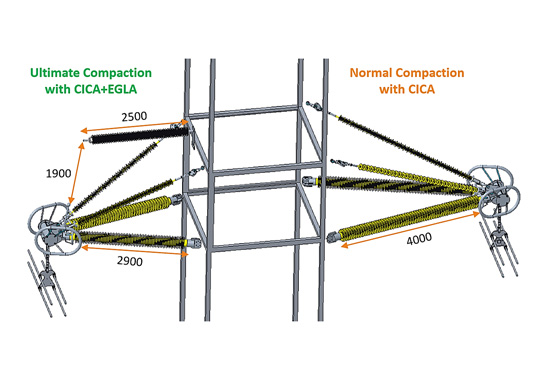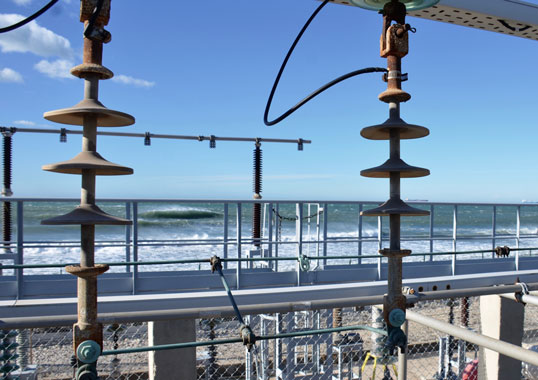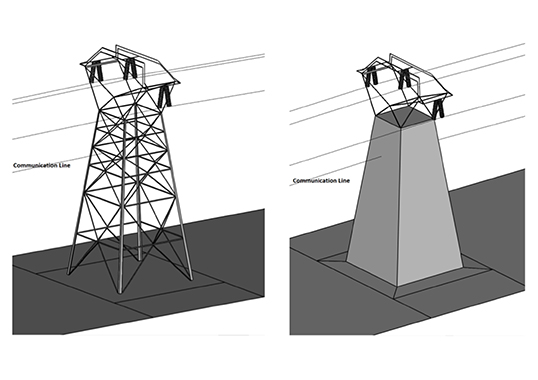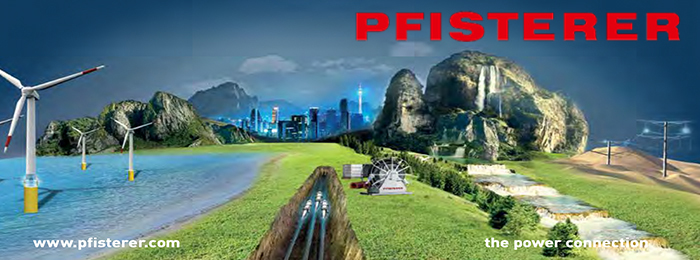As the all-too-familiar alarm resonated in the control room of the Aerial Intervention Unit, pilots prepared for the dangerous mission ahead – extinguishing wildfires along the Italian peninsula. The CL-415s were ready for take off within minutes, carrying a full load of fuel and enough extinguishing foam for at least 10 drops. Water was to be scooped close to the target. The situation seemed critical on this July afternoon in 2022. At least 4 extended fire sources were detected and other planes were already flying in from elsewhere.
Upon arrival, the first water scooping was carried out with the standard procedure: 12 seconds of slow flight just touching the waves at 130 km/h to capture 6000 l of seawater to be mixed with retardant foam. And so the ‘circus’ began: entering the operating circuit, descending, delivering, pulling-up to escape, scooping and returning.
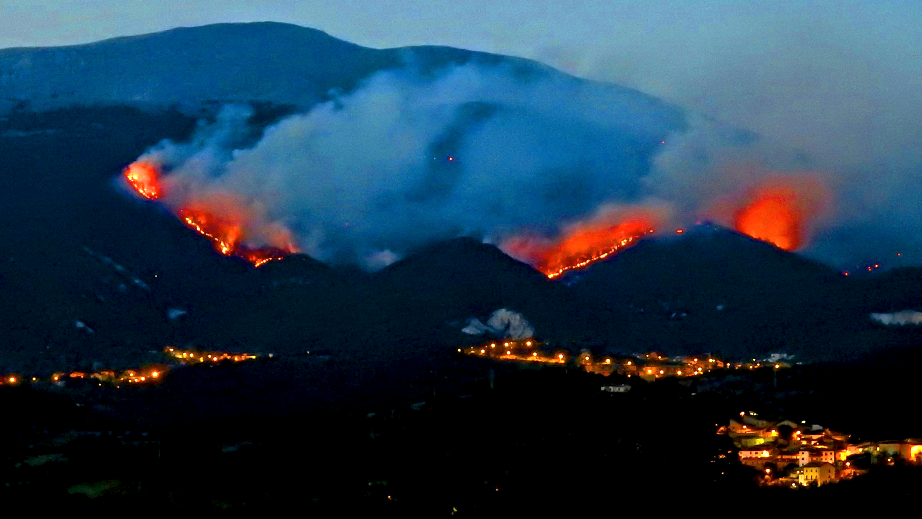
The landscape was hellish: fire all around and power lines … the most dangerous obstacle. Conductors strained between lattice towers are virtually impossible to see from the air. Fortunately, the towers were still visible through the dense smoke and a flight path in parallel to conductors could be flown without danger – 40 m above ground and nearly touching the wires with the wingtip.
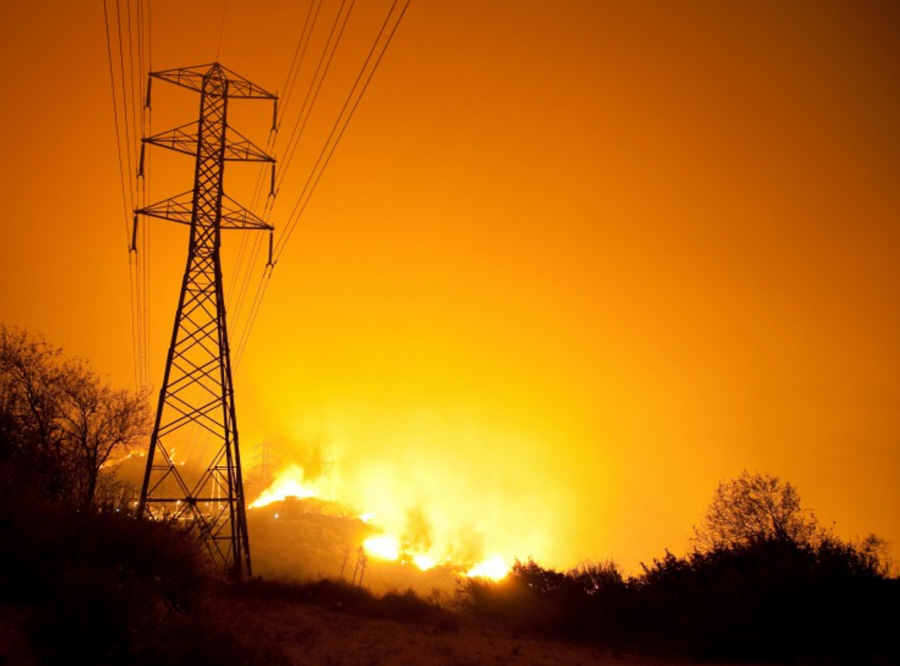
Safety procedures governing firefighting operations close to transmission lines was applied by Italian TSO, Terna, and the line was no longer energized even though this would not have been a problem for the planes. Rather, the order to de-energize was given to protect firefighters on the ground. Pouring 6 tons of water in only 5 seconds can pose a serious danger because of the risk of flashover to ground along the conductive pathway of the cloud of salty water, mixed with fire extinguishing foam.
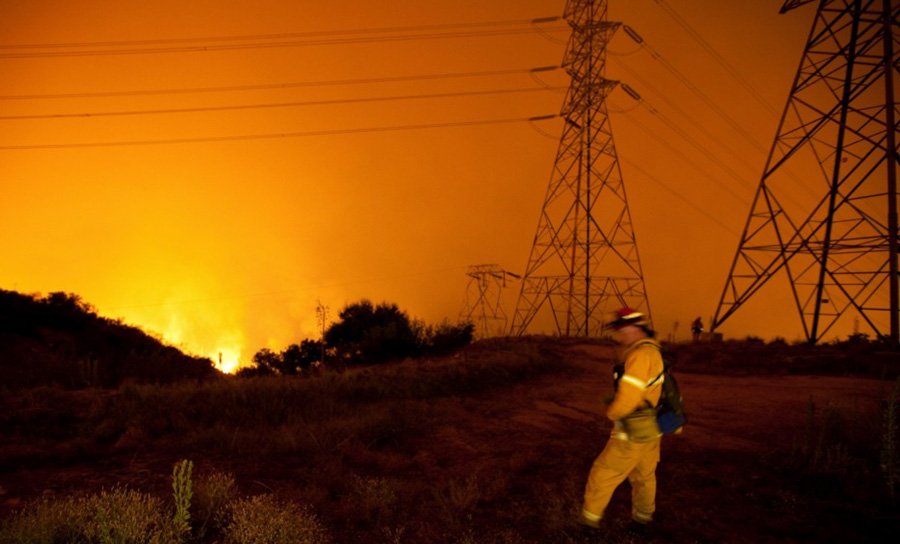
On that occasion the aerial firefighting proved essential to save lives and forest but the scar was still brutal: 3700 hectares of land on fire in a fight that lasted for more than a week. Highways had to be closed, people evacuated from homes. The power system suffered as well: three lines at 220 kV and three at 132 kV were de-energized for hours, together with the 400 kV interconnection to Slovenia. Fortunately, the city of Trieste was blacked out for only a short time thanks to reconnection using wise system reconfiguration.
This example is but one of hundreds of such events happening across Italy each year during the period ranging from June to October. Due to this persistent threat impacting large areas and also affecting portions of the country’s transmission system, a specific research project has been undertaken in a collaboration between RSE and Terna to set up the best possible tools and procedures to mitigate risk.
Like in many other parts of the globe, wildfires are occurring more frequently along the Italian peninsula, damaging extensive territory, jeopardizing properties and marring natural landscapes. For a wildfire to develop, three elements of the ‘fire triangle’ must be present at the same time: the fuel (straw, wood, grass), oxygen and temperature. The first two elements are present almost everywhere whereas the temperature for ignition can be linked to specific climatic conditions. The most common natural cause of wildfire ignition is lightning in the absence of rain but this happens only rarely. Other causes are human related. For example, agriculture and forestry activity can be an origin of wildfires and indeed fire is used to burn stubble, dispose of vegetable residues from agricultural or forestry work and to renew pastures and uncultivated land. These operations are often carried out close to woods and uncultivated areas that can be prone to fire, especially during the dry and warm seasons.
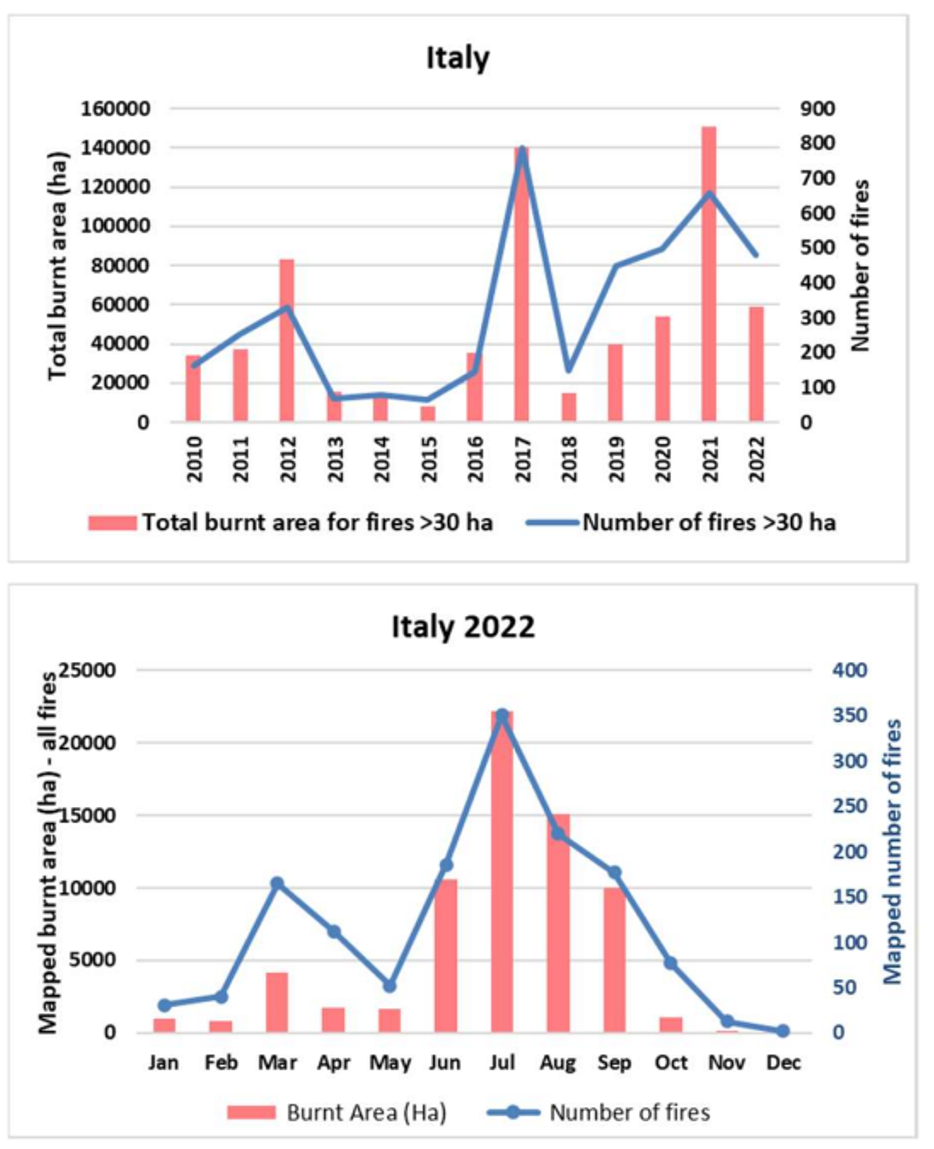
In 2022, Italy was affected by medium and large-scale fires covering more than 68,500 hectares (ha). As shown in Fig. 1 (top), although the surface burned was lower last year than in 2021, it remained higher than the average annual value between 2012 and 2021 (i.e. 55,000 ha). Fig. 1 (bottom) shows that fire events occurred mainly in summer, both in terms of number and impact. Over 20% of the land burned in 2022 consisted of forest ecosystems and, as shown in Fig. 2, Sicily suffered more than 50% of the total affected territory.
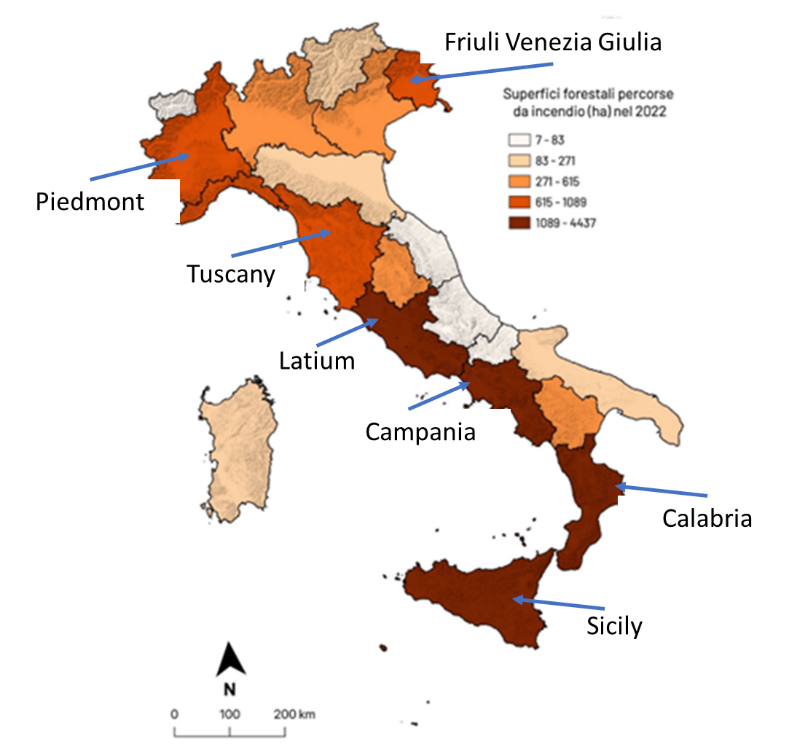
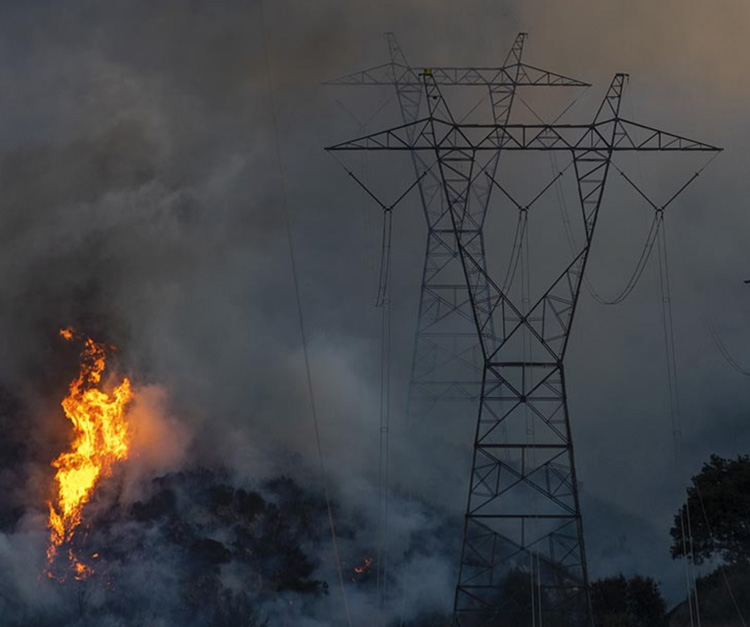
Attend the 2023 INMR WORLD CONGRESS in Bangkok for an important technical presentation dealing with impact of wildfires on power systems. Michele de Nigris, Director of Sustainable Development & Energy Sources at RSE will review the impact of wildfires on overhead transmission lines based on extensive ongoing research. His lecture will deal with the threat and address interaction of wildfire with power lines in light of recent service experience actoss Italy. Indices will be proposed to characterize the link between danger and observations from past events as will evolution of this threat given ongoing climate change. Attention will also be given to operational aspects of fighting wildfires in proximity to overhead lines and practical rules will be outlined to avoid danger from electrocution during firefighting.

[inline_ad_block]

